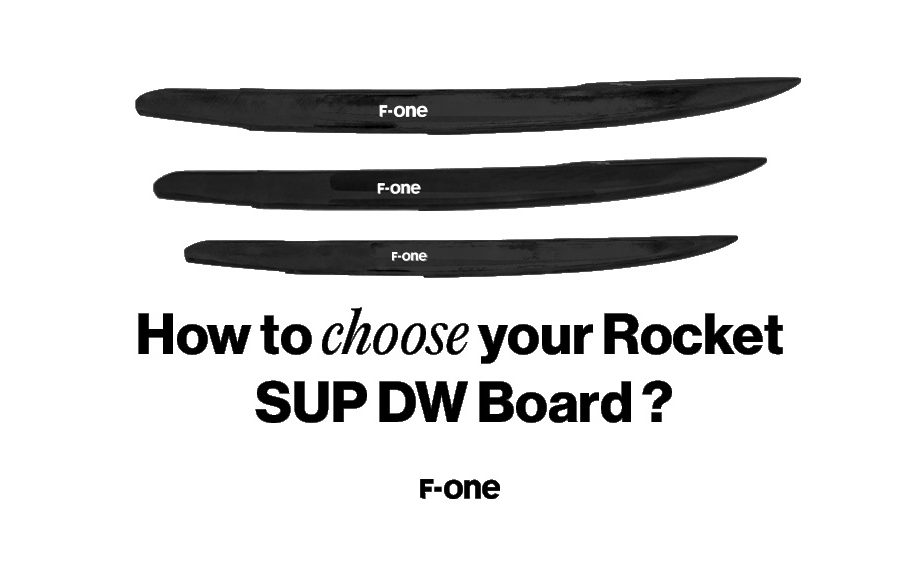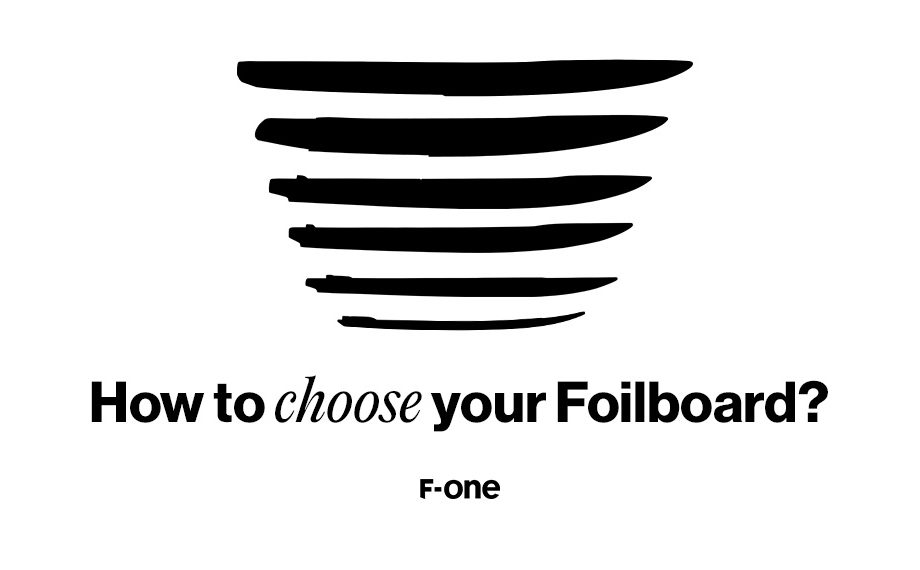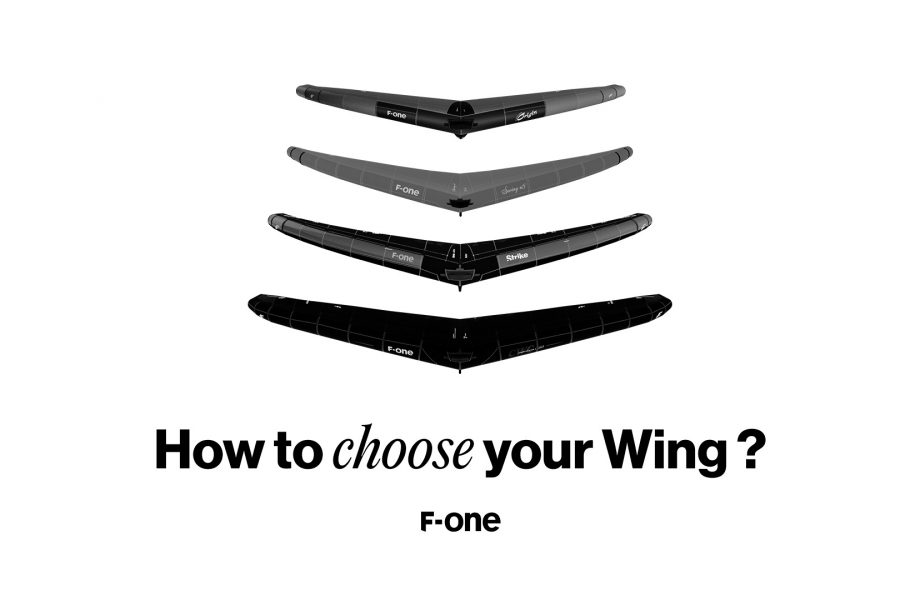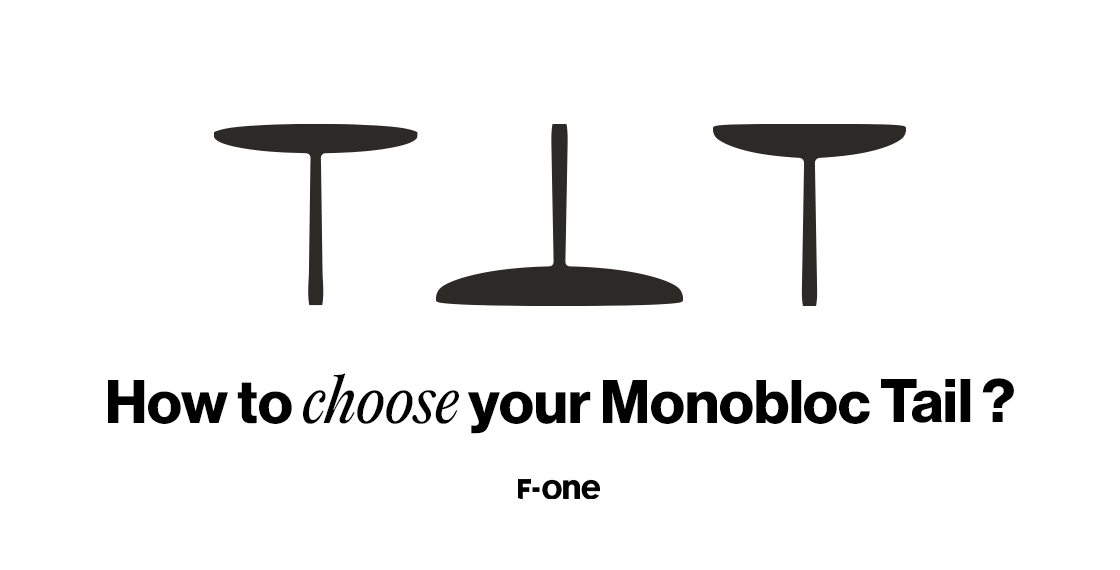
Choosing the right Monobloc Tail is crucial in your foil setup as the tail undoubtedly influences the behavior of the entire plane and impacts your ride. Simply changing your tail can make your setup behave completely differently, and bring about new sensations and performances.
Here is our guide to help you choose your F-ONE Monobloc Tail. Just like when it comes to choosing your front wing, your decision will vary depending on your skill level, your weight, the conditions, and your chosen program.
Why Monobloc Tails?
Our Monobloc Tails combine the stabilizer and the rear part of the fuselage. This Monobloc construction improves stiffness and flow efficiency by eliminating connections and providing a more streamlined design. This premium connection will make any foil more reactive, more stable, and faster. It also removes two screws, so you can be on the water quicker.
There are a few basic principles to our Monobloc Tails. Overall, the tails with the bigger surfaces offer more stability, accessibility and are easier to ride, but have added drag. The smaller tails are faster and more maneuverable, but a bit less stable.
For the same stab surface, a shorter fuselage will bring tighter turns. However in terms of maneuverability and efficiency, it is more beneficial to choose a smaller stab. In turn, we have adapted the fuselage length for you so the plane isn’t twitchy, i.e. pitch-sensitive. Aiming for maximum efficiency, our latest Monobloc Tails hence feature, in general, smaller wings and longer fuselages for a more uniform balance, less drag, and enhanced pitch stability.
All in all, when choosing your Monobloc Tail, keep in mind that the smaller tails will perform better at higher speeds, while the larger ones prove more effective at lower speeds. In the end, it all depends on what you are doing, and it could also be worth trying different ones for yourself to see how big of an impact a tail makes on your front wing.
Our Monobloc Tails Range
At this time, our range is split into four different models: Carving, Carving W, Downwind (DW) and Pumping. These come in a variety of sizes, which you can pair with your body type, your chosen discipline, or how much stability you’re looking for.

Monobloc Tail Carving
With a thin profile and higher aspect ratio, the Carving range is the way to go if you need speed and maneuverability. These Monobloc Tails will provide a looser, more snappy feeling, as well as a faster pumping pace. All sizes are equipped with fences on the wingtips to reduce the induced drag and to improve the overall performances and maneuverability.
The Carving profile is quite powerful and provides a great pumping and low end. This is the weapon of choice for surf foilers who need to pump back to the peak, or for wing foilers who want a comfortable low end.
The smaller sizes benefit from a new profile, leading to a stance slightly more towards the rear. In turn, these will help you get as close as possible to the feeling of pure surf with greater speed and better control of the foil in the pocket. The longer fuselage brings stability and enables you to push hard into your turns.
Available sizes: XXXS 200 cm², XXS 200 cm², XS 160 cm² and XS 140 cm².

Monobloc Tail Carving W
The Carving W profile was built to provide the best possible pitch stability and steady lift. No matter the speed, no matter how much you push in the carves, the Carving W tails will hold and stay stable. These tails are a bit more difficult to pump and hence are more directed toward winging and tow-in.
These tails are made for wing foilers who are looking for higher speeds and more powerful carves. Thanks to their new profile, reduced surface area and longer fuselage, they provide the best possible balance between front and back foot, with a steady lift at all times.
Available sizes: XS 161 cm² and XS 141 cm².

Monobloc Tail DW
The Monobloc Tails DW provide improved speed as well as greater stability and forward projection so you can perform better with less fatigue. They are perfect to link waves, and greatly enhance the efficiency and fun of your downwinds.
The smaller sizes benefit from a longer fuselage to provide pitch stability and better forward projection, which is a great advantage in strong wind conditions where the foil will cross bumps without jolting or over-power.
With their thin and optimized designs for minimal drag, these Monobloc Tails make the foil more playful, allowing you to better connect bumps and have more fun carving.
Available sizes: XXS 210 cm², XXXS 190 cm², XXS 170 cm² and XS 145 cm².

Monobloc Tail Pumping
As its name indicates, this Monobloc Tail is specific to pump foil and dockstart sessions. It pairs up perfectly with our JAM foil. With an aspect ratio of 7.6 and large surface area, this tail offers exceptional pumping abilities and a fantastic glide.
The angle of the stab has been specially designed to optimize weight distribution evenly over the front and back legs, reducing fatigue and boosting endurance when pumping.
Available size: XXS 200 cm².

All in all, our Monobloc Tail range was built with “plug and play” in mind so that each front wing and tail have a balanced behavior when correctly paired together. Each of our front wing has at least one tail recommended as a first choice, and we have also added secondary suggestions that are relevant depending on the rider’s level and the chosen discipline.
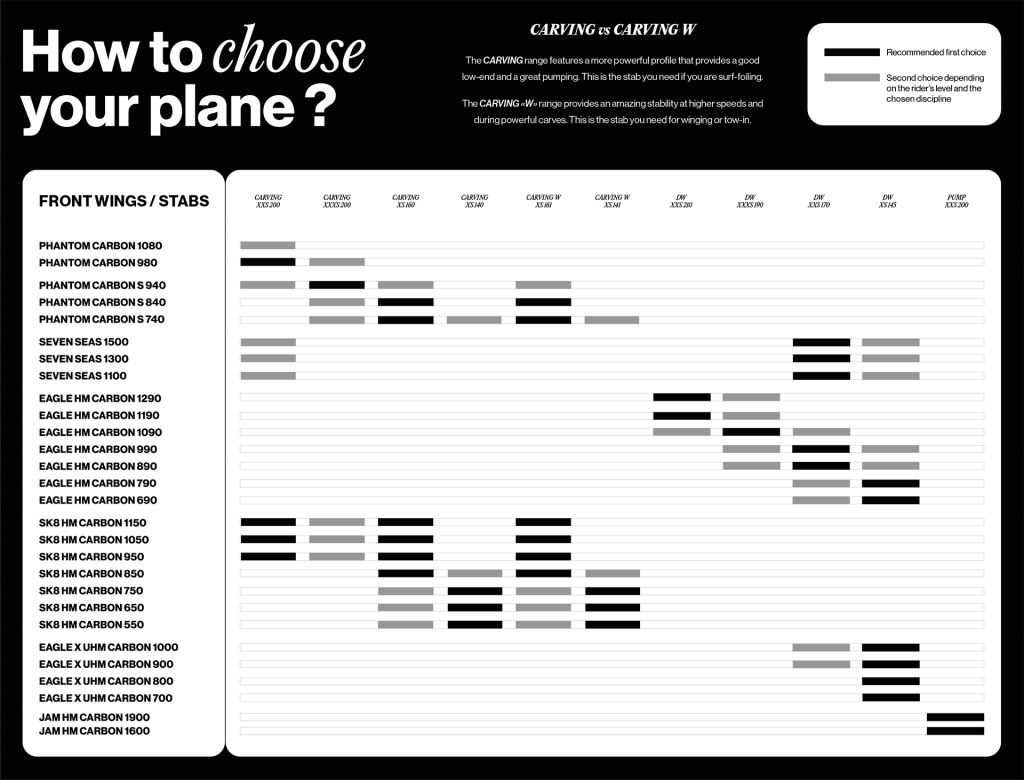
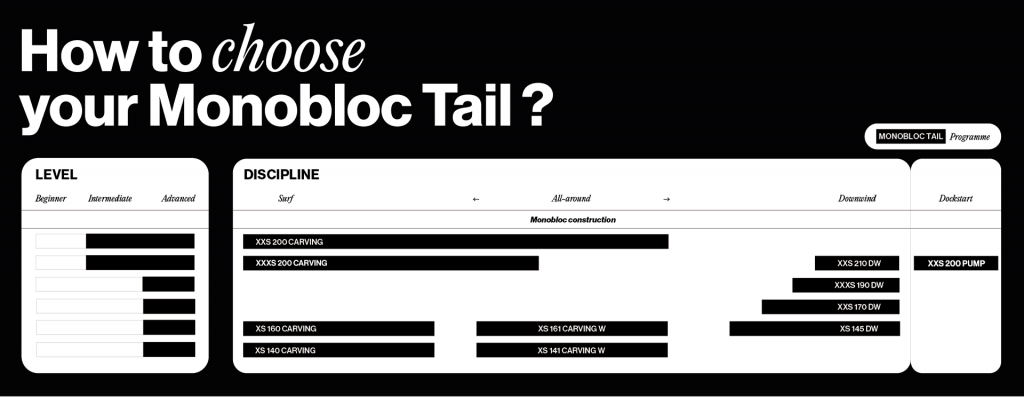
Constructions
All our Monobloc Tails are built from carbon pre-preg and High Modulus carbon fiber.

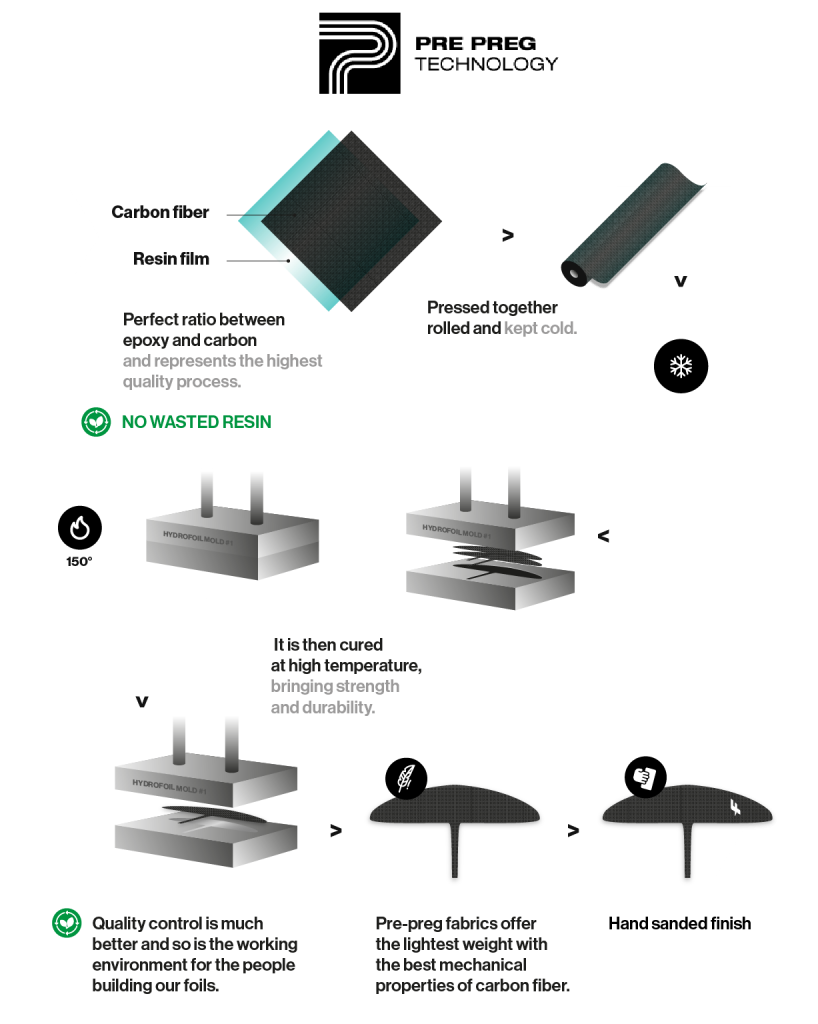
The HM carbon fiber layup is 1.5x stiffer than the regular carbon fiber used in other constructions. The percentage of high modulus fiber has been carefully adjusted to obtain the best stiffness in both bending and torsion, while keeping enough comfort for any kind of practice. This leads to even more rigidity and dependability that will propel you to incredible performances in each session.
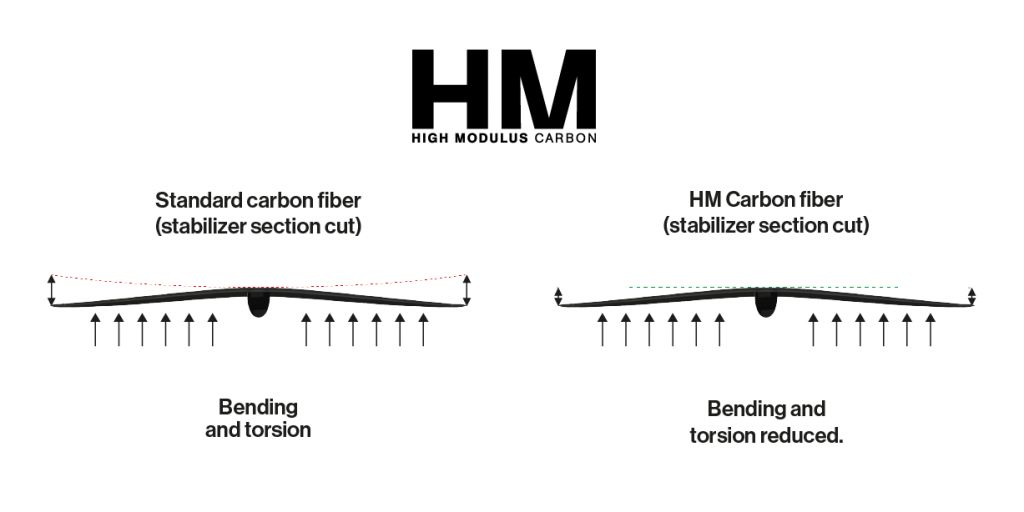
Finally, a rider shouldn’t be afraid to switch out and try out different tails to gain performance, speed, glide, turn radius or stability, depending on the conditions or chosen program. Obviously, the choice of Monobloc Tail needs to stay coherent with the rider’s level and intentions, as not all will match with all front wings.
